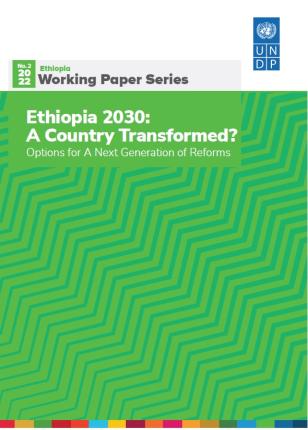Working paper series - Ethiopia 2030: A Country Transformed? Options for A Next Generation of Reforms

Working paper series - Ethiopia 2030: A Country Transformed? Options for A Next Generation of Reforms
February 13, 2023
Ethiopia’s 2022 population totals 123 million and is growing at an annual rate of 2.6 percent, making it the second highest in sub-Saharan Africa (SSA). According to the United Nations, that number will rise from an estimated 117 million in 2020 to almost 150 million in 2030, a projected increase of 27 percent over the next decade. The country’s economy is now the largest in East Africa - US$111.3 billion in 2021 - followed closely by Kenya, and is the fourth largest in sub- Saharan Africa (SSA). The United Nations still classifies Ethiopia as a least-developed country and the World Bank ranks it as a low-income country, although it aims to reach lower middle income status by 2025.
At present, between two to three million young people enter the labour market each year, facing already high underemployment in rural areas and high unemployment in cities and towns. At the same time, while the public investment-driven growth model followed since the mid-1990s has raised incomes, reduced poverty and boosted human development, it has proven unsustainable, leading to serious debt problems and rising macroeconomic imbalances. Moreover, structural reforms have proven to be insufficient, in both intent and application. They have not enabled the private sector to emerge as the engine of transformation from a subsistence agriculture-based economy to a more modern economy based on the higher productivity – and, thus, higher income – of manufacturing and services. In essence, the State’s preponderant role in the economy has crowded out and stunted the growth of a vigorous private sector. The situation has become more complex and complicated as a result of a series of shocks that have hit Ethiopia’s economy and society in the second decade of the 21st century: the COVID-19 pandemic; the conflict in northern Ethiopia and elevated levels of insecurity elsewhere in the country; the war in Ukraine; declining ODA during 2020-22; and climate shocks evident in severe droughts and floods. Ethiopia is, thus, at a crossroads.

 Locations
Locations